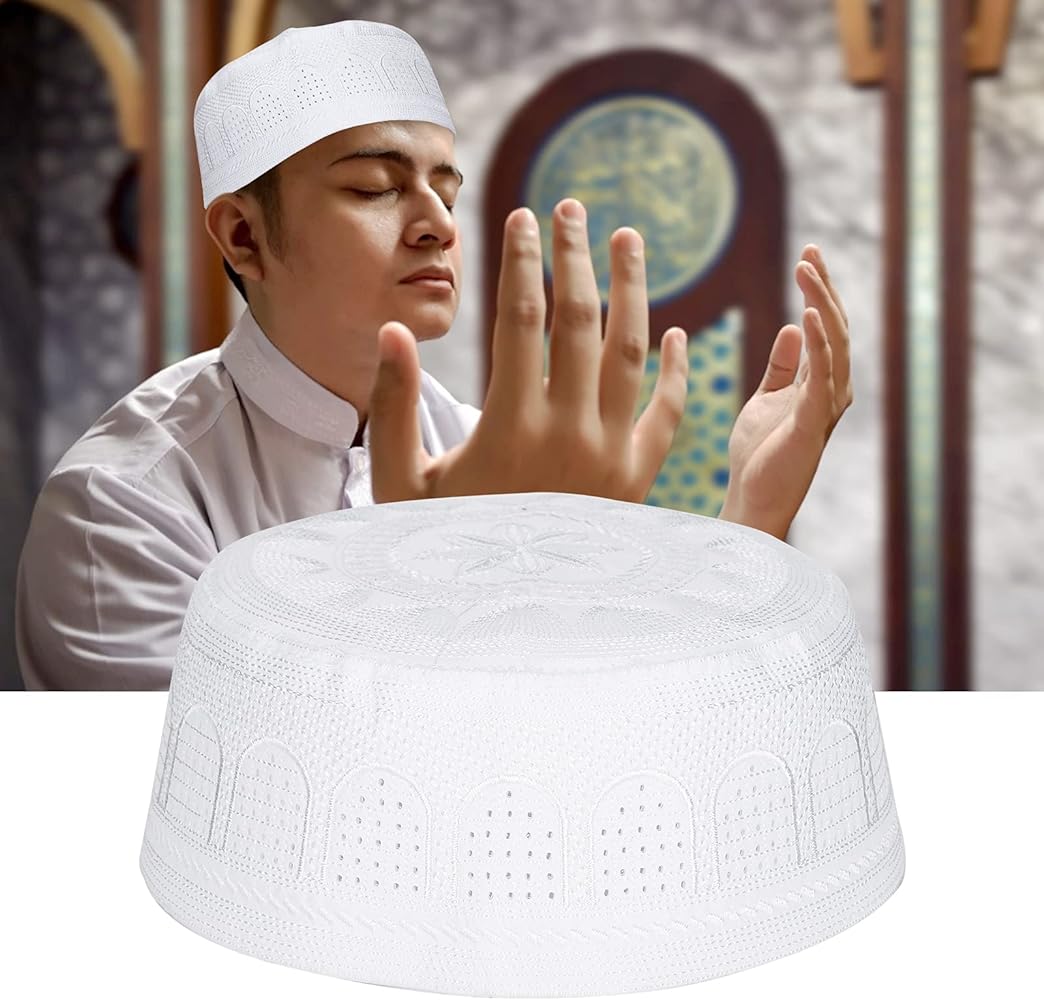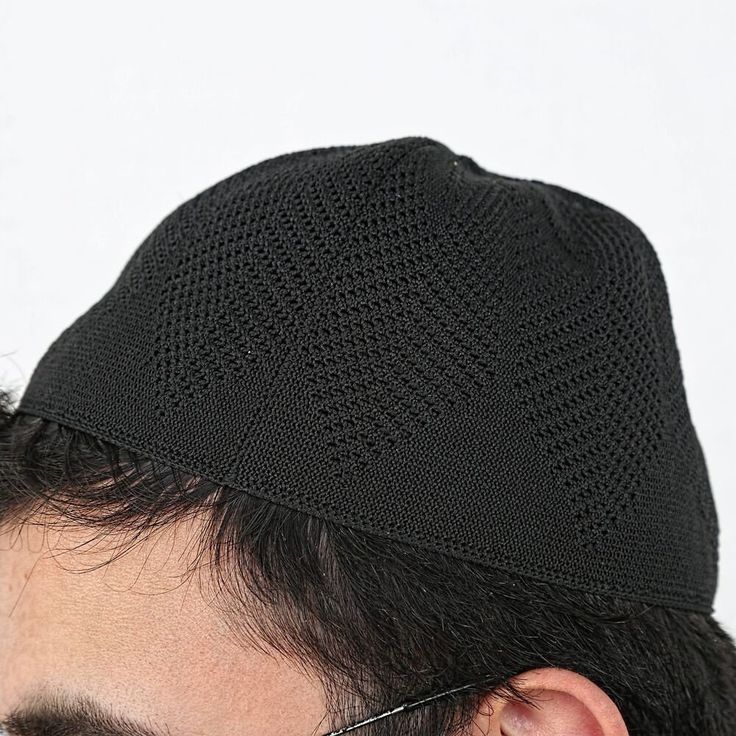
In the realm of Islamic traditions, prayer hats stand as a ubiquitous symbol, adorning the heads of countless Muslim men and boys during their daily prayers. These simple yet profound pieces of attire transcend mere adornment; they embody a rich tapestry of cultural significance, religious devotion, and personal expression. Embark on a journey to uncover the deeper meaning behind prayer hats in Islam, exploring their diverse forms, the reasons for their usage, and the cultural nuances that shape their significance.
A Tapestry of Styles: Unveiling the Varieties of Prayer Hats
The world of prayer hats within Islam is as diverse as the cultures and traditions it encompasses. Each region, community, and even individual may possess their own unique style, reflecting local customs and personal preferences. Among the most common types of prayer hats are:
-
Taqiyah (Skullcap): A simple, close-fitting cap, often made from cotton or wool, the taqiyah is a widely used prayer hat across the Muslim world.
-
Kufi: A square or rectangular cap with a slightly raised crown, the kufi is often associated with religious scholars and leaders.
-
Topi: A brimless cap resembling a skullcap, the topi is particularly popular in South Asia and Southeast Asia.
-
Imamah (Turban): A long piece of cloth wrapped around the head, the imamah holds significant religious and cultural symbolism, often associated with certain Islamic sects or ethnic groups. On the other hand, the Ghutra is a large, square scarf, often made from lightweight fabric, commonly worn in Arab countries, typically paired with an agal (headband).
A Convergence of Meanings: The Reasons for Wearing Prayer Hats
The significance of prayer hats in Islam extends far beyond mere aesthetics. They embody a confluence of meanings, serving as:
-
Adornment and Respect: During prayer, Muslims strive to present themselves in a state of cleanliness and respect, and prayer hats play a role in this endeavor. They symbolize the wearer’s reverence for the divine and their commitment to adhering to Islamic etiquette.
-
Cultural and Religious Identity: Prayer hats serve as visible markers of cultural and religious identity, fostering a sense of belonging and community among Muslims. They act as tangible links to one’s heritage and faith, reinforcing a sense of shared identity.
-
Modesty and Humility: In Islam, modesty highly values covering the head, which is often associated with self-expression and individuality, and prayer hats contribute to this principle. They promote humility and reverence, encouraging the wearer to focus on their spiritual connection with God.
-
Distinguishing Oneself During Prayer: In communal prayer settings, prayer hats can help distinguish worshippers from bystanders or those not actively engaged in prayer. This visual cue promotes order and decorum, ensuring a respectful and focused prayer environment.

A Mosaic of Traditions: Regional Variations in Prayer Hat Usage
The usage of prayer hats varies across different regions and cultures within Islam, reflecting the diversity of Islamic traditions and practices. Cultural norms, religious interpretations, and local customs influence the types of prayer hats worn, the manner in which people wear them, and the occasions for which they consider them appropriate.
-
Cultural and Religious Influences: Certain prayer hat styles may be prevalent due to their association with the dominant cultural or religious groups in a particular region. For example, the kufi is often associated with Sunni Muslims, while the imamah is more prevalent among Shia Muslims.
-
Variations in Styles and Materials: Prayer hats exhibit a wide range of styles, from simple skullcaps to elaborate turbans. People also vary in their choice of materials, with natural fibers like cotton and wool being common choices, while silk or embroidered fabrics may be used for special occasions.
-
Impact of Local Customs and Traditions: Local customs and traditions may further shape the usage of prayer hats. In some regions, both men and boys may wear prayer hats, while in others, their usage may be restrict to adult males.
Etiquette and Respect: Guidelines for Wearing Prayer Hats
Proper etiquette and respect are paramount when wearing prayer hats. The following guidelines should be observed:
-
Proper Placement and Orientation: Place the prayer hat firmly on the head, ensuring it covers the entire head from the forehead to the nape of the neck. Align the orientation of the hat with the direction of prayer, with the front of the hat facing the Qiblah (direction of Mecca).
-
Cleanliness and Maintenance: Prayer hats should be kept clean and well-maintained, reflecting the wearer’s respect for the sacred act of prayer. Regular washing and ironing ensure the hat remains presentable and in good condition.
-
Respectful Behavior When Wearing the Hat: When wearing a prayer hat, one should conduct themselves with humility and respect. Avoid engaging in activities that would undermine the sacred nature of the hat, such as frivolous conversations or disrespectful behavior in religious settings.

Beyond Misconceptions: Challenging Stereotypes and Promoting Understanding
Unfortunately, prayer hats have sometimes been subject to misunderstandings and stereotypes. It’s important to address these misconceptions and promote cultural sensitivity:
-
Addressing Common Misunderstandings: Some mistakenly believe that prayer hats are mandatory for all Muslims or that they signify a specific political ideology. However, understanding the diverse reasons behind their usage fosters a more informed perspective. Promoting Cultural Sensitivity and Understanding: By appreciating the cultural and religious significance of prayer hats, we can cultivate a more inclusive and respectful environment. Furthermore, open dialogue and interfaith interactions can bridge the gaps between cultures.
-
Challenging Negative Stereotypes and Prejudices: Negative stereotypes that associate prayer hats with extremism or violence are not only insensitive but also demonstrably untrue. Muslims from all walks of life wear prayer hats, and their presence should not be a source of fear or suspicion.
Personal Choice and Freedom of Expression
Ultimately, the decision of whether or not to wear a prayer hat is a personal one. Islam respects individual choices and recognizes the diversity of practices within the faith:
-
The Right to Wear or Not Wear a Prayer Hat: There is no compulsion in Islam to wear a prayer hat. Some Muslims choose to wear them for cultural or religious reasons, while others may not.
-
Respecting Individual Choices and Preferences: It is crucial to respect the personal choices of Muslims regarding prayer hats. Additionally, avoid making assumptions or judgments based solely on someone’s attire. Encouraging Open Dialogue and Understanding: Open communication can foster understanding. Furthermore, if curious about the reasons behind someone’s choice to wear a prayer hat, engage in respectful conversation to learn more.

Conclusion: A Symbol of Faith and Identity
Prayer hats in Islam are more than just head coverings; they are a symbol of faith, cultural identity, and personal expression. Understanding their significance allows us to appreciate the richness and diversity of Islamic traditions. As we navigate a globalized world, fostering cultural sensitivity and respect becomes ever more crucial. By recognizing the multifaceted meaning behind prayer hats, we can cultivate an environment of mutual understanding and appreciation.
Additional Resources:
- Explore a diverse range of prayer hats from various Muslim cultures; then delve into the history and symbolism behind each style. Next, discover resources that provide guidelines for wearing prayer hats respectfully, ensuring proper etiquette and cultural sensitivity. Lastly, find educational materials promoting cultural understanding and dispelling misconceptions about Islam and its traditions.

Related Topics
- Explore the broader concept of Islamic dress code and etiquette, understanding the principles and reasons behind modest attire. Additionally, delve into the rich tapestry of cultural diversity within Islam, appreciating the vast spectrum of traditions and practices. Moreover, learn more about combating Islamophobia and prejudice, fostering inclusivity and challenging negative stereotypes. By understanding the significance of prayer hats in Islam, we embark on a journey of cultural appreciation and build bridges of respect between different faiths and communities.
-
